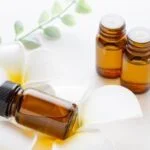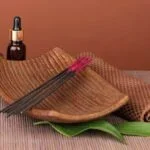Are aromatherapy diffusers humidifiers? This question has often sparked confusion among consumers, as both products are used to create a more comfortable and enjoyable indoor environment. Aromatherapy diffusers and humidifiers share the common goal of improving air quality, but they serve different functions.
In this article, we will explore the distinctions between these two popular home accessories, shedding light on their unique benefits and how they can best suit your needs. Understanding the differences between aromatherapy diffusers and humidifiers is essential for making an informed decision when it comes to enhancing your living space.
Aromatherapy diffusers are designed to disperse essential oils into the air, creating a pleasant fragrance while also promoting relaxation and well-being. There are various types of diffusers available in the market, including ultrasonic, nebulizing, heat, and evaporative diffusers. Each type operates differently to release essential oils into the surroundings.
On the other hand, humidifiers are primarily intended to add moisture to the air in order to combat dryness, especially during winter months or in arid climates. There are different types of humidifiers as well, such as evaporative, ultrasonic, impeller, and steam vaporizers.
The confusion surrounding whether aromatherapy diffusers are humidifiers stems from their potential overlapping features. While some diffusers may also have a slight humidifying effect due to the moisture released along with the essential oil mist, this does not make them true humidifiers.
It is important for consumers to understand these nuances in order to make an informed choice about which product suits their specific needs best. With that in mind, let’s delve deeper into the distinct characteristics of aromatherapy diffusers and humidifiers to clarify any misconceptions and help you make the right decision for your home environment.
Understanding Aromatherapy Diffusers
Aromatherapy diffusers are devices that are specifically designed to disperse essential oils into the air, allowing for a pleasant aroma to fill the surrounding space. There are several types of aromatherapy diffusers available in the market, each with its own unique way of diffusing the essential oils. Some common types include ultrasonic diffusers, nebulizing diffusers, evaporative diffusers, and heat diffusers.
- Ultrasonic Diffusers: These diffusers use ultrasonic vibrations to break down the essential oil into tiny particles, which are then released into the air as a fine mist.
- Nebulizing Diffusers: This type of diffuser does not require water and instead uses pressurized air to disperse the essential oil in a concentrated form.
- Evaporative Diffusers: These diffusers utilize a fan to blow air through a pad or filter containing the essential oils, causing them to evaporate and fill the room with fragrance.
- Heat Diffusers: Heat is used in these diffusers to gently warm the essential oil and release its aroma into the air.
The primary function of aromatherapy diffusers is to promote relaxation, improve mood, and create a pleasing ambiance through the use of different essential oils. Each type of diffuser may have its own set of benefits and drawbacks, so it’s important for individuals to consider their specific needs when choosing one. It’s important to note that while aromatherapy diffusers add fragrance to the air, they do not necessarily add moisture or humidity like humidifiers do.
Understanding Humidifiers
Humidifiers are devices designed to add moisture to the air, particularly in indoor spaces where the air may be dry. Dry air can lead to a variety of issues such as dry skin, irritated sinuses, and respiratory problems. Humidifiers work by emitting water vapor or steam into the air, increasing the humidity levels in the surrounding environment. There are several types of humidifiers available in the market, including ultrasonic humidifiers, evaporative humidifiers, impeller humidifiers, and steam vaporizers.
Ultrasonic humidifiers use ultrasonic vibrations to produce a cool mist, while evaporative humidifiers have a fan that blows air through a wet wick or filter. Impeller humidifiers create a cool mist using rotating disks, and steam vaporizers heat water to produce steam. Different types of humidifiers may be suitable for different needs and preferences. For instance, ultrasonic and impeller humidifiers tend to operate more quietly than evaporative models.
In terms of their benefits, humidifiers can significantly improve the quality of indoor air and help alleviate various health issues caused by dry air. They can also be especially beneficial during colder months when heating systems tend to decrease the moisture content in the air. Additionally, using a humidifier can aid individuals with respiratory conditions or allergies by providing relief from symptoms such as congestion and throat irritation.
Key Differences Between Aromatherapy Diffusers and Humidifiers
- How their functions and purposes differ
- Consideration of potential overlapping features
Aromatherapy diffusers and humidifiers are both popular devices used in homes and wellness spaces, but they serve different purposes. Aromatherapy diffusers are specifically designed to disperse essential oils into the air, while humidifiers are meant to add moisture to the air. While there may be some confusion about whether they are interchangeable, it is important to understand the key differences between these two products.
One of the main differences between aromatherapy diffusers and humidifiers is their primary function. Aromatherapy diffusers are focused on dispersing essential oils, which can have various therapeutic benefits such as promoting relaxation, improving mental clarity, and boosting mood. On the other hand, humidifiers are intended to increase humidity levels in indoor spaces, which can be particularly beneficial in dry climates or during winter months when heating systems tend to dry out the air.
Another important distinction is how these devices operate. Aromatherapy diffusers typically use ultrasonic technology, nebulizing technology, or heat to disperse essential oils into the air as a fine mist or vapor. Humidifiers, on the other hand, work by releasing water vapor or steam into the air to increase moisture levels.
| Aromatherapy Diffusers | Humidifiers |
|---|---|
| Disperses essential oils | Adds moisture to the air |
| Ultrasonic/ nebulizing/ heat technology | Releases water vapor or steam |
Benefits of Aromatherapy Diffusers
Aromatherapy diffusers offer a wide range of benefits that can positively impact overall well-being and enhance the atmosphere in any space. Here are some specific benefits of using aromatherapy diffusers:
- Support for mental and emotional well-being: Aromatherapy diffusers disperse essential oils into the air, which can have a direct impact on mood and emotions. Certain essential oils are known for their calming properties, while others can uplift and energize.
- Potential for relaxation and improved sleep: Many people find that certain essential oils, such as lavender or chamomile, help create a soothing environment that promotes relaxation and better sleep. The gentle aroma can create a calming effect that sets the stage for restfulness.
- Overall enhancement of the environment: Aromatherapy diffusers not only make the air smell pleasant but also serve to purify and cleanse the air. This can help to eliminate odors and create a more pleasant living or working environment.
Using aromatherapy diffusers with high-quality essential oils can have a significant impact on one’s daily life by promoting a sense of balance, calm, and well-being.
Benefits of Humidifiers
Improvement in Air Quality and Breathing
Humidifiers play a crucial role in maintaining the moisture levels in the air, which ultimately leads to improved air quality. Dry air can often lead to respiratory issues and allergies, especially during the winter months when indoor heating systems further reduce humidity levels. By adding moisture to the air, humidifiers can help alleviate breathing problems, reduce sinus congestion, and soothe irritated nasal passages.
Alleviation of Dry Skin and Sinus Issues
One of the most noticeable benefits of using a humidifier is the relief it provides from dry skin. Low humidity can cause skin to become dry, itchy, and cracked, leading to discomfort for many individuals. Additionally, humidifiers can also help alleviate sinus issues by preventing nasal passages from drying out, reducing snoring, and soothing symptoms of colds or flu. The added moisture from a humidifier can also prevent nosebleeds that are often triggered by dry air.
Prevention of Static Electricity
In addition to creating discomfort for people, low humidity levels can also have adverse effects on homes and furniture. When the air lacks moisture, static electricity tends to build up more easily, causing annoying shocks when touching objects or people. Humidifiers can help prevent this buildup of static electricity by maintaining adequate humidity levels in the indoor environment.
Overall, incorporating a humidifier into your home can provide numerous benefits beyond simply adding moisture to the air. From improving breathing conditions and alleviating sinus problems to preventing static electricity buildup, these devices are valuable tools for enhancing overall comfort within indoor spaces.
Are Aromatherapy Diffusers Humidifiers?
Aromatherapy diffusers and humidifiers are often confused for each other due to their similar appearance and the fact that they both disperse substances into the air. However, it is important to understand that they serve different purposes and have distinct mechanisms of action.
Clarifying the Differences
Aromatherapy diffusers are specifically designed to disperse essential oils into the air, often using a combination of water and ultrasonic vibrations to create a fine mist. On the other hand, humidifiers are intended to add moisture to the air in order to alleviate dryness and improve breathing conditions. Understanding these differences is crucial in choosing the right device for your needs.
Potential Overlapping Features
While aromatherapy diffusers and humidifiers have distinct functions, there are certain types of diffusers that also have humidifying capabilities. These devices may be marketed as “hybrid” models or “cool mist diffusers,” but it’s important to carefully read product descriptions and specifications to determine if they can effectively serve as both an aromatherapy diffuser and a humidifier.
Choosing the Right One for Your Needs
When deciding between an aromatherapy diffuser and a humidifier, it’s essential to consider your specific needs. If you primarily want to enjoy the therapeutic benefits of essential oils or create a relaxing atmosphere, an aromatherapy diffuser may be more suitable.
However, if you’re looking to address issues related to dry air such as dry skin or respiratory problems, a dedicated humidifier would be the better choice. Ultimately, understanding the differences between these devices will help you make an informed decision based on your individual preferences and requirements.
Conclusion
In conclusion, it is important to recognize that aromatherapy diffusers and humidifiers serve distinct purposes and offer unique benefits. Aromatherapy diffusers are specifically designed to disperse essential oils into the air, impacting mental, emotional, and physical well-being through their aromatic properties. On the other hand, humidifiers are focused on adding moisture to the air to improve air quality, alleviate dry skin, and help with breathing and sinus issues.
While there may be some confusion about whether aromatherapy diffusers are also humidifiers, it is crucial to understand that they function differently and cater to different needs. It is essential for individuals to assess their specific requirements before deciding which device is best suited for them. Whether seeking relaxation and enhanced sleep through aromatherapy or aiming for improved air quality and alleviation of respiratory symptoms with a humidifier, making an informed choice can lead to optimal results.
Ultimately, both aromatherapy diffusers and humidifiers offer valuable contributions to creating a more comfortable and healthy home environment. By understanding their differences and benefits, individuals can make educated decisions that align with their wellness objectives. It is recommended that individuals conduct thorough research and consider consulting with professionals if necessary in order to select the most suitable option for their unique needs.

Are you looking for a natural way to improve your health and wellbeing?
If so, aromatherapy may be the answer for you.






